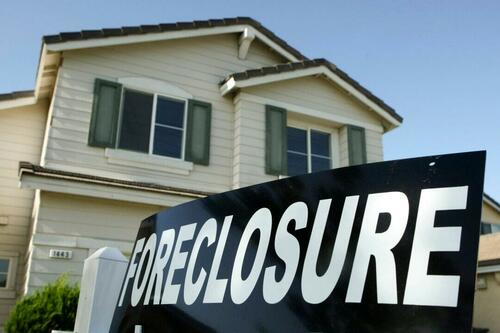OPEC’s Strategic Shift: Adjusting Oil Demand Forecast Amid Economic Turbulence
Tháng 4 14, 2025Navigating Uncertainty: A Deep Dive into UK Consumer Spending and Confidence
Tháng 4 14, 2025Rising Foreclosure Filings in March 2025: Analysis and Implications
In March 2025, the U.S. housing market experienced a notable uptick in foreclosure filings, with a total of 35,890 properties reporting such activity. This figure represents an 11% increase from February and a 9% rise compared to March 2024. These statistics emerge following three successive quarters of decline in foreclosure activity, indicating a growing challenge for many homeowners. While these numbers suggest there are increased pressures on household finances, it is important to note that the current levels of foreclosure activity still remain below historical averages.
Understanding the Dynamics of Foreclosure Starts and Bank Repossessions
The increase in overall foreclosure filings can be largely attributed to the 25,070 properties that entered the foreclosure process during March, marking a 10% rise from February and an 8% increase year-over-year. This significant rise in foreclosure starts is a cause for concern, highlighting the economic pressures many families are currently facing.
Financial stability for homeowners has been tested in recent months due to various factors, including inflationary pressures, rising interest rates, and stagnant wage growth. As these economic challenges persist, more homeowners may find themselves unable to keep up with mortgage payments, leading them to enter the foreclosure cycle.
Moreover, lenders completed foreclosures on 3,687 properties in March, which is a striking 22% increase from the previous month and an alarming 37% increase from March 2024. This trend suggests that banks and mortgage lenders are starting to take a more aggressive stance on delinquent loans, which may further contribute to the increasing number of homes entering foreclosure.
Regional Trends in Foreclosure Rates
The data also reveals significant regional variations in foreclosure rates. The states with the highest foreclosure rates in March include Delaware, Nevada, Illinois, Indiana, and Connecticut. Each state is grappling with unique economic challenges that may be exacerbating the foreclosure crisis.
Despite the uptick in foreclosure activity, there is a silver lining; many homeowners hold strong equity positions in their properties. This strong home equity acts as a buffer, helping to prevent a more significant surge in foreclosure rates. Homeowners who are under financial strain may find it more beneficial to sell rather than go through the foreclosure process, allowing them to leverage their home equity to reduce their financial burden.
Conclusion: Monitoring Future Trends
As we progress through 2025, it will be crucial for both prospective buyers and existing homeowners to monitor these foreclosure trends closely. While the current increase in foreclosures points to economic distress, the underlying strength in home equity may provide some resilience against more widespread financial crises. Understanding these dynamics will empower homeowners and investors to make informed decisions in an evolving real estate landscape, ensuring they stay ahead of the challenges that lay ahead.

